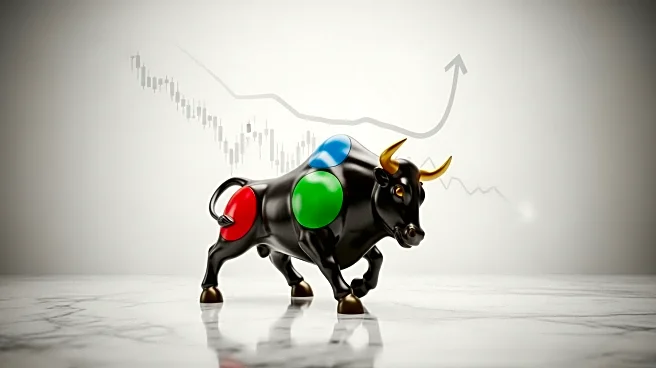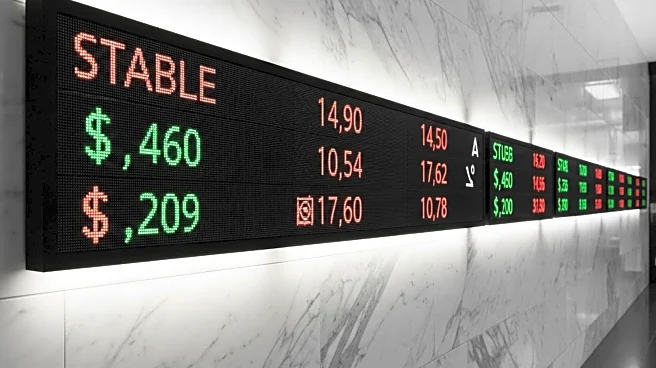What's Happening?
PepsiCo has experienced a challenging period with its shares underperforming compared to its competitor, Coca-Cola. Over the past year, PepsiCo's shares have decreased by 16%, while Coca-Cola's shares have increased by 7% year-to-date. Analysts have shown a preference for Coca-Cola, with 29 buy ratings compared to PepsiCo's 8 buy ratings. Despite this, technical indicators suggest that PepsiCo's shares may be poised for a recovery. The stock is approaching a critical price level of $145/$146, which historically has been a turning point. Momentum indicators, such as the RSI and MACD, are showing signs of a potential bullish trend, indicating that PepsiCo's shares might break their recent downtrend.
Why It's Important?
The potential recovery of PepsiCo's shares is significant for investors and the consumer staples sector. A positive earnings report could lead to increased investor confidence and a shift in market dynamics between PepsiCo and Coca-Cola. If PepsiCo's shares break above the critical price level, it could signal a long-term turnaround, offering investors an opportunity to add a stable consumer staple to their portfolios. This development could also impact the broader market perception of PepsiCo, potentially leading to increased analyst ratings and investor interest.
What's Next?
Investors are advised to monitor PepsiCo's earnings report closely, as it could provide insights into the company's future performance. A breakout above the $145/$146 level could lead to a rally towards $156, with potential long-term targets of $175/$180. However, caution is advised, as historical data shows that PepsiCo's shares have experienced significant drops following earnings reports. Investors should consider setting stop losses at $135 to mitigate downside risks. The upcoming earnings report could be a pivotal moment for PepsiCo, potentially influencing its market position and investor sentiment.
Beyond the Headlines
The anticipated recovery of PepsiCo's shares could have broader implications for the consumer staples sector, highlighting the importance of technical analysis in investment decisions. The formation of an inverted head-and-shoulders pattern suggests a potential long-term shift in market dynamics, which could influence investment strategies and portfolio allocations. This development underscores the need for investors to consider both fundamental and technical factors when evaluating stock performance.











